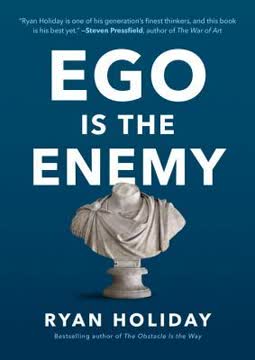النقاط الرئيسية
1. إتقان فن التلميح لتجاوز المقاومة
"التلميح يتيح لك تجاوز المقاومة الطبيعية للناس، لأنهم يبدون وكأنهم يستمعون فقط لما نشأ في أنفسهم."
الاقتراح الضمني قوي. التلميح يسمح لك بزرع الأفكار في عقول الناس دون إثارة دفاعاتهم. من خلال تقديم الاقتراحات بشكل غير مباشر، تتيح للهدف أن يعتقد أن الأفكار هي أفكاره الخاصة، مما يجعله أكثر تقبلاً. تتضمن هذه التقنية:
- إسقاط تلميحات خفية أثناء المحادثات العادية
- استخدام لغة غامضة يمكن تفسيرها بطرق متعددة
- القيام بتعليقات أو إيماءات "عرضية" تنقل معاني خفية
- السماح للصمت والتوقفات بالتحدث بجلاء
التوقيت حاسم. التلميحات الأكثر فعالية تُقدَّم عندما يكون الهدف مسترخياً أو مشتتاً. التجمعات الاجتماعية، المزاح الودي، والأنشطة المشتركة توفر فرصاً مثالية لإدخال تعليقات تلميحية دون أن تُلاحظ.
2. خلق حاجة بإثارة القلق وعدم الرضا
"القلق، الشعور بالنقص والحاجة، هو مقدمة لكل رغبة."
استغلال الفراغ الداخلي. معظم الناس لديهم انعدام أمان ورغبات غير محققة. من خلال تذكير الأهداف بشكل غير مباشر بما يفتقدونه أو إثارة القلق بشأن وضعهم الحالي، تخلق حاجة يمكنك ملؤها. تشمل التقنيات:
- التلميح إلى الفرص الضائعة أو الإمكانيات غير المحققة
- مقارنة الهدف بشكل غير ملائم مع الآخرين
- تذكيرهم بالمثل العليا التي تخلوا عنها في الماضي
- الإيحاء بأن حياتهم الحالية تفتقر إلى الإثارة أو المعنى
عرض الحل. بمجرد أن توقظ عدم الرضا، ضع نفسك كحل لاحتياجاتهم المكتشفة حديثاً. هذا يجعل الهدف يراك كمخلص له، ويقبل ما تقدمه بحماس.
3. الظهور كموضوع للرغبة لزيادة قيمتك
"نحن نريد ما يريده الآخرون."
خلق هالة من الجاذبية. الناس ينجذبون بطبيعتهم إلى ما يجده الآخرون جذاباً. من خلال الظهور كشخص محبوب ومطلوب، تزيد من قيمتك المتصورة وتصبح أكثر جاذبية. تشمل الاستراتيجيات:
- إحاطة نفسك بالمعجبين
- التلميح إلى الفتوحات أو العلاقات السابقة
- خلق منافسة أو مثلثات الرغبة
- الحفاظ على جو من الغموض وعدم الوصول
الاستفادة من الدليل الاجتماعي. عندما يبدو أن الآخرين يرغبون فيك، فإنه يثير غريزة تنافسية في هدفك. سيرغبون في امتلاك ما يشتهيه الآخرون، مما يجعل إغوائك أسهل.
4. إرسال إشارات مختلطة لخلق الغموض والجاذبية
"مزيج من الصفات يوحي بالعمق، مما يثير الفضول حتى وهو يربك."
كن مفارقة. البشر ينجذبون إلى ما لا يمكنهم تصنيفه بسهولة. من خلال إظهار صفات تبدو متناقضة، تصبح لغزاً مثيراً يرغب الآخرون في حله. أمثلة:
- الجمع بين الصلابة والحنان
- مزج البراءة بالحسية
- موازنة الذكاء بالعفوية
- التناوب بين التفاعل الدافئ والبرود
اجعلهم يخمنون. المفتاح هو ألا تكون متوقعاً بالكامل. عندما يعتقد هدفك أنه قد فهمك، اكشف عن جانب جديد من شخصيتك يفاجئهم.
5. اختيار الضحية المناسبة للإغواء الناجح
"الضحية المثالية لديها بعض الصفات الطبيعية التي تجذبك."
اختيار الهدف حاسم. ليس الجميع عرضة للإغواء بنفس القدر. ابحث عن الأفراد الذين:
- يمرون بفترة انتقالية أو ضعيفة في حياتهم
- لديهم احتياجات أو رغبات غير محققة يمكنك استغلالها
- يمتلكون صفات تثير اهتمامك أو تجذبك حقاً
- يظهرون علامات الملل أو عدم الرضا عن وضعهم الحالي
تجنب الأهداف الخاطئة. ابتعد عن أولئك الذين:
- راضون جداً أو مكتفون بأنفسهم
- متشائمون أو متعبون بشكل مفرط
- غير متاحين عاطفياً أو مغلقين
تذكر، اهتمامك الحقيقي بالهدف سيغذي جهودك الإغوائية، مما يجعلها أكثر إقناعاً وفعالية.
6. خلق شعور زائف بالأمان من خلال النهج غير المباشر
"في البداية يجب ألا يكون هناك شيء من المغوي في سلوكك."
نزع السلاح من خلال الصداقة. اقترب من هدفك بشكل غير مباشر من خلال إقامة علاقة غير مهددة أولاً. هذا يخفض دفاعاتهم ويسمح لك بجمع معلومات قيمة عن رغباتهم ونقاط ضعفهم. تشمل التكتيكات:
- تقديم نفسك كصديق أو موثوق
- إظهار اهتمام حقيقي بحياتهم وأفكارهم
- تقديم الدعم أو المساعدة دون توقع
- زيادة الحميمية تدريجياً من خلال التجارب المشتركة
الصبر هو المفتاح. دع العلاقة تتطور بشكل طبيعي، دون استعجال أو دفع للحصول على أكثر مما يكون الهدف مستعداً لتقديمه. هذا يبني الثقة ويجعل إغوائك النهائي يبدو كأنه تطور طبيعي بدلاً من خطة مدبرة مسبقاً.
7. الدخول في روحهم لخفض الدفاعات وكسب الثقة
"العب بقواعدهم، استمتع بما يستمتعون به، تكيف مع مزاجهم."
كن مرآتهم. الناس بطبيعتهم نرجسيون وينجذبون إلى من يعكس صفاتهم الخاصة. من خلال التكيف مع شخصية هدفك واهتماماته وقيمه، تخلق اتصالاً قوياً. يتضمن ذلك:
- تقليد أسلوب تواصلهم ولغة جسدهم
- مشاركة حماساتهم والمشاركة في هواياتهم
- تأكيد رؤيتهم للعالم وآرائهم
- التكيف مع حالتهم العاطفية ومستوى طاقتهم
التأثير التدريجي. بمجرد أن تدخل في روحهم تماماً وتكسب ثقتهم، يمكنك أن تبدأ في تشكيل أفكارهم ورغباتهم بشكل غير مباشر. هذا يسمح لك بقيادتهم إلى إغوائك دون أن يشعروا بأنهم تعرضوا للتلاعب أو الضغط.
آخر تحديث::
FAQ
What's The Art of Seduction by Robert Greene about?
- Exploration of Seduction: The book delves into the psychology of seduction, presenting it as a powerful form of influence and control. It synthesizes historical examples and literary references to illustrate timeless strategies.
- Character Archetypes: Greene identifies ten archetypal seducers, such as the Siren and the Rake, each embodying different seductive qualities. These serve as models for understanding attraction and manipulation.
- Seductive Maneuvers: The book outlines twenty-four specific maneuvers for seducing others, emphasizing patience, strategy, and emotional manipulation.
Why should I read The Art of Seduction by Robert Greene?
- Understanding Human Nature: The book provides insights into human desires and motivations, revealing how seduction operates on both conscious and unconscious levels.
- Practical Strategies: Greene offers advice applicable in various social situations, enhancing persuasive abilities and social skills in both romantic and professional contexts.
- Historical Context: Rich with historical anecdotes, the book connects timeless principles of seduction to contemporary life, making it relevant for modern readers.
What are the key takeaways of The Art of Seduction by Robert Greene?
- Power of Seduction: Seduction is portrayed as a subtle and effective form of power that can be wielded by anyone to gain influence in relationships.
- Emotional Manipulation: Creating feelings of desire, insecurity, and excitement is crucial for successful seduction, with an emphasis on insinuation and suspense.
- Self-Awareness: Greene stresses the need for self-awareness, encouraging readers to identify their seductive qualities and adapt their approach based on the target's desires.
What are the best quotes from The Art of Seduction by Robert Greene and what do they mean?
- "Seduction is the most subtle, elusive, and effective form of power.": This quote suggests that seduction operates beneath overt power dynamics, allowing influence without force.
- "The ability to delay satisfaction is the ultimate art of seduction.": It highlights the Coquette's strategy of creating desire through absence, intensifying longing.
- "Charm is seduction without sex.": Greene distinguishes charm from sexual seduction, indicating its effectiveness in creating attraction in social and professional contexts.
How does Robert Greene define seduction in The Art of Seduction?
- Seduction as Power: Greene defines it as a subtle, indirect form of power, contrasting with overt control, to achieve desires without confrontation.
- Psychological Manipulation: Seduction involves playing on emotions and desires through charm, attention, and emotional resonance.
- Art and Strategy: It is presented as both an art and a strategy, requiring careful planning and execution, akin to a game mastered with practice.
What are the different types of seducers described in The Art of Seduction by Robert Greene?
- The Siren: Uses allure and sensuality to captivate, embodying femininity and mystery.
- The Rake: Characterized by intense passion and desire, creating excitement and danger.
- The Coquette: Plays hard to get, using warmth and aloofness to heighten desire.
What are the phases of seduction outlined in The Art of Seduction by Robert Greene?
- Phase One: Create Temptation: Awaken desire by hinting at pleasures to come, stimulating curiosity.
- Phase Two: Lead Astray: Keep the target emotionally engaged and confused, creating unpredictability.
- Phase Three: The Precipice: Deepen emotional connection through extreme measures, solidifying the bond.
How can I apply the concepts from The Art of Seduction by Robert Greene in my life?
- Self-Reflection: Identify and enhance your seductive qualities to navigate social interactions effectively.
- Practice Emotional Manipulation: Use strategies to create emotional responses, making others feel special or desired.
- Adapt to Your Audience: Tailor your approach based on individual needs and desires, adjusting behavior to resonate.
What role does absence play in the strategies outlined in The Art of Seduction by Robert Greene?
- Creating Tension: Absence creates tension and longing, making the target yearn for the seducer's return.
- Psychological Manipulation: Induces insecurity and anxiety, prompting the target to pursue more aggressively.
- Reinforcing Desire: Absence reinforces desirability, leading to a more intense emotional connection upon reunion.
How does The Art of Seduction by Robert Greene address the concept of emotional highs and lows?
- Emotional Rollercoaster: Creating highs and lows keeps the target engaged and invested in the relationship.
- Intensity of Experience: Fluctuations intensify the experience, making the climax more rewarding.
- Dependency Creation: Alternating pleasure and pain fosters dependency, strengthening the bond.
What are some common pitfalls to avoid in seduction as outlined in The Art of Seduction by Robert Greene?
- Overexposure: Avoid becoming too familiar or predictable, maintaining mystery and intrigue.
- Neglecting Emotional Dynamics: Manage emotional highs and lows to maintain intensity in the relationship.
- Being Too Nice: Avoid being overly accommodating, as boldness and assertiveness are key to seduction.
How can one maintain the seductive atmosphere after the initial seduction according to The Art of Seduction by Robert Greene?
- Continuous Re-seduction: Introduce new experiences and surprises to prevent familiarity from dulling the relationship.
- Injecting Drama: Create tension or conflict to reignite the initial spark and keep the relationship dynamic.
- Avoiding Complacency: Engage the target's emotions and desires continually to preserve and enhance the seductive atmosphere.
مراجعات
تلقى كتاب "فن الإغواء" آراء متباينة، حيث يشيد البعض بحكاياته التاريخية ورؤاه النفسية، بينما ينتقد آخرون تكتيكاته التلاعبية. يقدر القراء التحليل الشامل للكتاب لتقنيات الإغواء وتطبيقاتها خارج نطاق العلاقات الرومانسية. يجد الكثيرون أنه مسلٍ ويثير التفكير، مشيرين إلى فائدته في فهم السلوك البشري. ومع ذلك، يجادل النقاد بأن الكتاب يروج للتلاعب غير الأخلاقي وتشييء الآخرين. يواجه بعض القراء صعوبة مع طول الكتاب وتكرار محتواه، بينما يعتبره آخرون مصدرًا قيمًا للنمو الشخصي والديناميات الاجتماعية.
Similar Books























